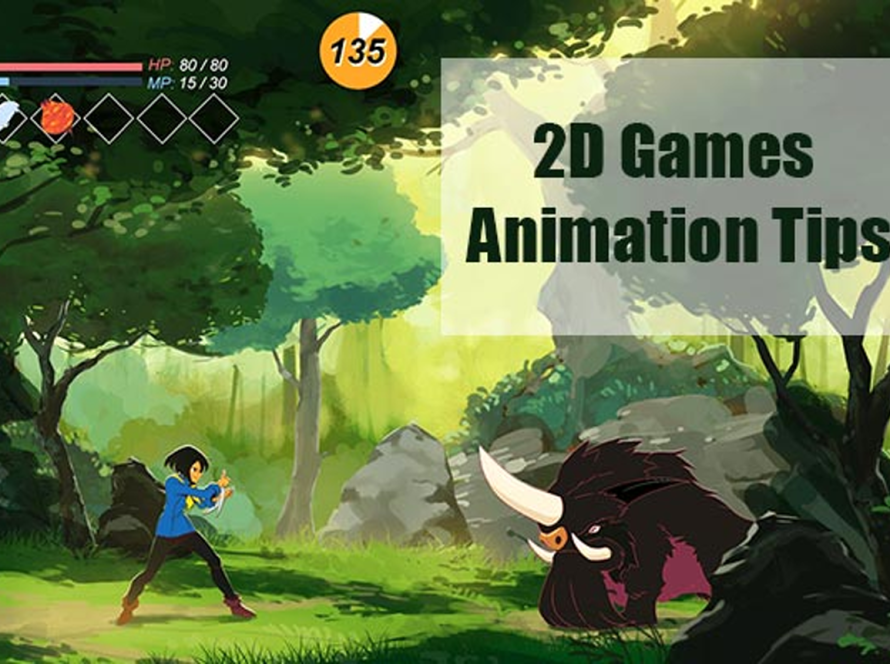The change of scenes in animation is a crucial step in creating an engaging experience for the gamer. To achieve smooth transitions between scenes in a 2D game, there are some helpful tips for you. Follow us to learn about: Achieving smooth transitions: Tips for seamless scene changes.
Choose suitable transition types for 2D game
In essence, each type of transition is designed to fit different scene change scenarios. Therefore, selecting the appropriate scene transition type will help you achieve smooth and natural transitions in your 2D game. Here are some suggested options for you:
Motion Blur
- Creates a soft and natural effect, reducing the abrupt feeling during fast transitions between scenes in your 2D game.
- Suitable for fast motion, enhancing the smoothness of movement.
Fast Image Transitions
- Generates dynamic effects and impresses gamers.
- Suitable for situations that demand speed and dynamism, such as in action sequences 2D characters.
Cut Transition
- Creates a fast and abrupt motion effect for your 2D game.
- Suitable for situations demanding quickness and innovation.
Animated Transitions
- Uses dynamic effects like slide, zoom or rotate to create flexible movement.
- Impressive and engaging in multimedia design and 2D gaming.
Crossfade Transition (Fade In/Fade Out)
- Creates a smooth and natural effect when transitioning between scenes in 2D games..
- Not suitable for every situation, especially if quickness or abrupt changes are needed.
Ensure consistency
The next tip is to ensure consistency in both scenes. If an object or a part of the scene is in motion, make sure that a similar object or equivalent movement appears in the following scene.
Additionally, you need to maintain coherence for 2D characters in terms of appearance, size, how objects move, etc. Refer to some principles of consistency in transitions:
- Graphic Style
- Color
- Lighting and Shadows
- Gamer’s Perspective
- Smooth and Uniform Motion
By adhering to these principles, you can achieve a cohesive and harmonious transition between scenes.
Adding Sound for 2D game
One of the crucial techniques for achieving smooth transitions is integrating sound during scene changes in 2D games. Firstly, choose music or sound that aligns with the mood and content of the scene. Remember that the sound should be suitable to create a sense of natural flow.
Secondly, intelligently integrate sound consistently throughout the game. You can create sound highlights to enhance interaction, but be attentive to the consistency of the music.
Remember to adjust the volume to maintain the clarity of the content. Additionally, ensure there is subtle background music or gentle sounds to avoid a sense of emptiness in the gamers’ audio experience.
In certain situations, the power of silence can be impactful. Consider using moments of silence before a scene change to amplify the focus and attention of gamers.
Integrating special effects
In addition to incorporating music, you have the option to introduce various motion effects. Here are some types of special effects that you can integrate into your motions to ensure they are smooth and distinctive:
- Use short flash effects to achieve fast motion, creating a sense of creativity and speed.
- Create a vanishing effect by using small particles to cover the screen before smoothly transitioning to a new scene, offering an engaging and intriguing visual shift.
- Use shadow or highlight effects to create a mysterious and contrasting atmosphere in your 2D game.
- Apply zoom effects to introduce a sense of depth and space.
- Use dynamic background lighting to create a smooth and captivating visual experience for gamers.
- Apply color filter effects to create a unique color transition between scenes.
- Combine effects such as explosions, shrinking, or rotation to create visually appealing and attention-grabbing motion.
Integrating these effects can bring about smooth motion and enhance the creative aspects of your project. However, it’s crucial to ensure that the use of special effects aligns with the overall style of your 2D game.
Timeline and Rhythm
Paying attention to the timeline and rhythm is crucial to ensure that animations and scene transitions occur smoothly and do not create a negative impression for the gamer. Therefore, conduct a check of the animation timeline to ensure that keyframes and scene transitions are arranged in the correct sequence and timing.
Moreover, the speed of motion and scene transitions should not be too fast or too slow compared to the overall rhythm of the animation. Here, determine the duration for each scene to be displayed and ensure that it accurately reflects the movement of the story in 2D game. Avoid displaying scenes that are too short or too long in comparison to the content that needs to be conveyed.
Testing and Repetition
Lastly, don’t hesitate to engage in continuous testing and iteration. Experiment multiple times and repeat the process of transitioning scenes smoothly to achieve the most perfect project. The key is to listen and make adjustments to ensure the audience’s experience remains excellent.
With the tips for seamless scene changes shared above, we hope you can achieve smooth transitions for your 2D game. Explore additional helpful articles here.




